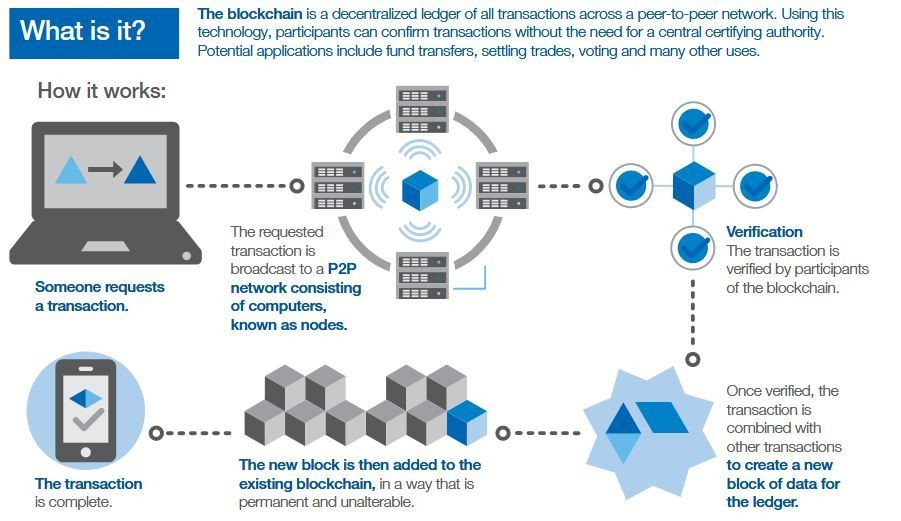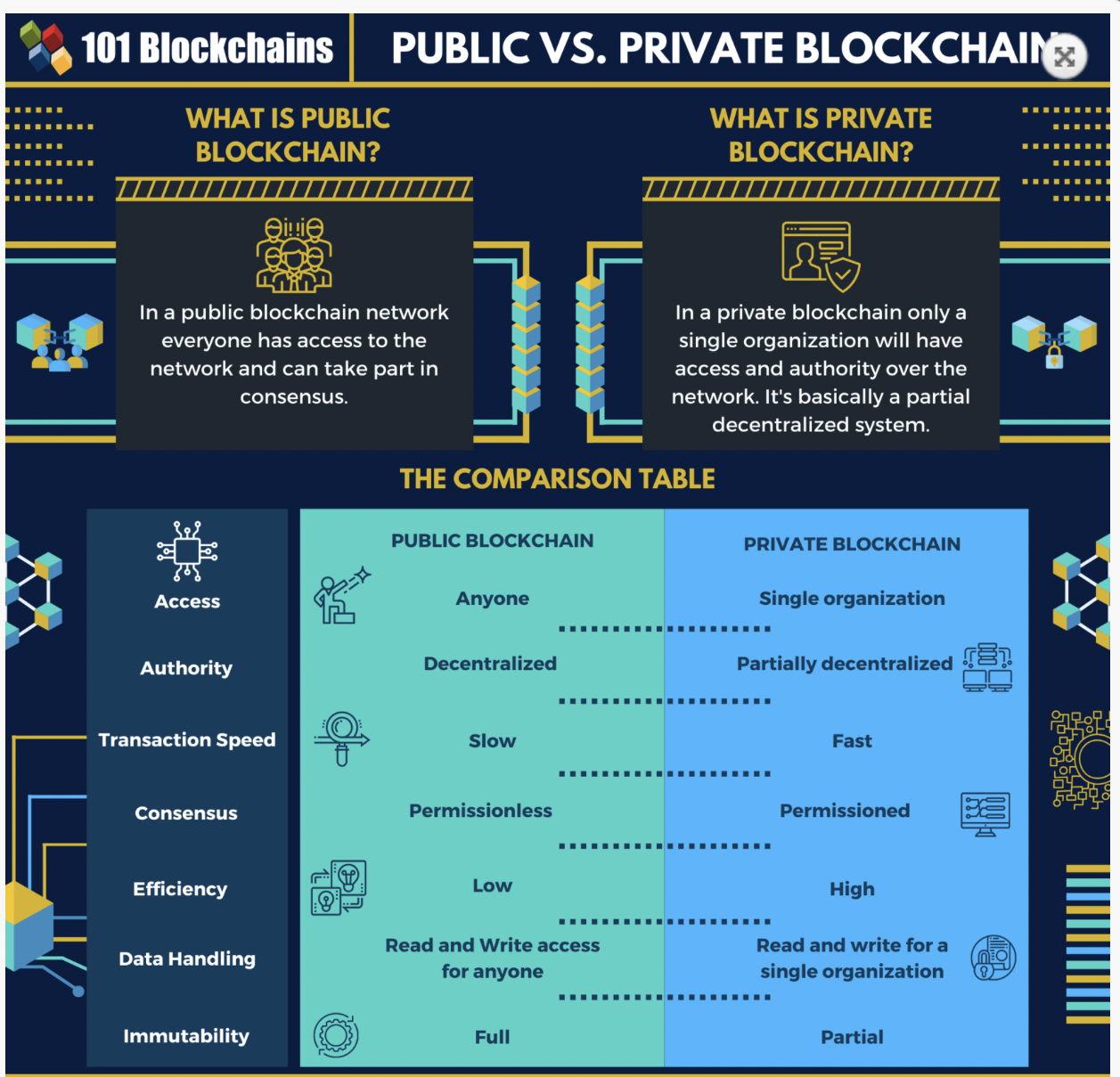Blockchain is one of the most promising technologies that is immutable, reliable and operates a lot quicker and in affordable rates. It is a distributed ledger that allows monetary transactions, property records of valued assets with lower error rates, less resulting risks, lower capital requirements as well as less vulnerability to cyber attacks.
Blockchain technology has several applications that span around the following:
• payments,
• capital markets,
• trade services,
• investment and wealth management
• securities, and
• commodities exchanges.
According to the report presented in April 2016 by the European Commission blockchains are gaining immense popularity. Hence it can be concluded that it has the ultimate potential to radically overhaul existing business models. Distributed ledger technology is predicted to reduce financial services infrastructure cost between US$15 billion and $20 billion per annum by 2022, according to a Santander FinTech study. This provided the possibility to decommission legacy systems and infrastructure and also significantly reduced IT costs.
Another such information, sourced from the article published by Bloomberg in October 2017, disclosed that Goldman Sachs and Google are among the most active blockchain investors. It also said that 10 of the largest U.S. banks have invested $267 million in six blockchain companies and one consortium.

Insight of blockchains:
The highly complex and profound niche of blockchain is based upon two of its variants: the public blockchains and private blockchains. To understand these blockchains it is necessary to elevate the cognisance of the advantages of the blockchains. Otherwise, one wouldn’t know which blockchain to choose to represent a viable solution for their businesses. When it comes to the question of which blockchain is better, a prominent solution needs to be chalked out, keeping the hybrid solutions in mind as well.
• Secret keeper: A blockchain shares a network between each other and holds onto the confidentiality of the transactions in its place.
• Accountable: Due to their inter-connectivity these blockchains are answerable to each other. The visibility of the data to each and every participant makes them accountable for their actions.
• Tamper- proof: These distributed, decentralised public ledger blocks carry a record of data which is an immutable time-stamped series. Cryptography bridges the gap between them.
Hereby are the explicit discussions for private and public blockchains:
Public blockchain:
Blockchains are distributed, democratized and operated authority-free. The explanations for these are as follows:
• Popular public blockchains such as Bitcoin, Tezos and Ethereum are entirely accessible to the public.
•These are made up of several independent nodes that are formed globally. They are decentralised, hence encouraging new participants to participate and be acrobatic.
•Therefore it can be inferred that a public blockchain is “permissionless” as it’s name suggests.
In short, anyone can read, write, and audit the ongoing activities on the public blockchain network, which helps a public blockchain maintain its self-governed nature.
Private blockchain:
In the truest sense the private blockchain is concentrated, closely distributed and can run only through an authentic and verified invitation. To explain them in detail are as follows:
• A consortium blockchain, also known as private blockchain restricts the collective participation of people unlike public blockchains.
• Only verified and valid contenders are selectively taking part in this private business or rather a private blockchain implementation after “taking permission”. Validation is also necessary either by the network operator(s) or by a clearly defined set protocol implemented by the network.
• The basic distinction between the public and private blockchains comprehends that private blockchains control who is allowed to participate in the network, execute the consensus protocol that decides the mining rights and rewards, and maintain the shared ledger. The owner or operator has the right to override, edit, or delete the necessary entries on the blockchain as required. Hyperledger Fabric of Linux foundation is a perfect example of private blockchain.
The analogy of public and private blockchains:
Both the public and private blockchains have a closer correspondence in terms of not altering or deleting information/data. The developing flavours of blockchains has often been misconstrued. The similarities observed between two of the said blockchains are as follows:
●Two of them connect with dispersed peer-to-peer networks, where each participant maintains a replica of a shared append-only ledger of digitally signed transactions.
●Both maintain the replicas in sync through a protocol referred to as consensus.
●Both provide certain guarantees on the immutability of the ledger, even when some participants are faulty or malicious.
Refer to the image below for a better grasp of the idea:

Private blockchains or public blockchains: which one to go for?
Companies have seemingly overcome all the privacy issues since the development of confidential technologies such as encryption. In recent days, when the question arises of choosing public or private blockchains, one needs to decide wisely. Hence, the following points below are going to make it easy to make a choice, like:
• When it comes to public blockchains, they’re highly secure and privatized in spite of the multitude of participation. The blockchains that are faster and more scalable include Plasma or Lightning; these are also famous by the name of layer 2 scaling.
• Subsequently, these tech improvements are discouraging the implementation of private blockchains.
• Public blockchains have also been promising to save money unlike private blockchains, who are running and maintaining the entire blockchain network by private entities. With the internet blossoming each day, public blockchains can be predicted to be undergoing further developments.
• Also, a very notable point would be that the blockchains have always relied on vast connectivity and networking. Here the public blockchains again are ahead of private blockchains but fragmented on private ones. “When gadgets make decisions for us, they also transform the decisions we might have made into mere opportunities to consume”
Here is an example quoted down below for an explicit explanation of the above:
“For example, tokenized assets such as digital stocks or bonds cannot pass between private chains, meaning that to own a digital security tokenized on a private chain, one would have to be a member of the consortium governing the private chain – given the size and scale of private and public capital markets, it would be virtually impossible to bring all participants onto one private chain network, and value would be destroyed because of fragmentation rather than created. With public chains, more market participants can engage, enabling greater connectivity and exchange of value, thereby providing additional value to all participants. As public chain technology continues to advance, the fundamentally superior economics of public chains will inevitably lead to an obsolescence of private chains and a robust digital economy based on public blockchains.”
Conclusion
Public blockchains and private blockchains have their distinguished features as well as their own set of pros and cons. It has been hatching up into a technology itself as it ensures record accountability, transparency, and immutability of states such as goods ownership, balances of assets, evidence of the origin as well as possession, etc.
The order of magnitude is more as compared to the public blockchain. It can also make use of consensus algorithms like Proof of Elapsed Time (PoET), Raft and Istanbul BFT. As the number of authorised participants is less in this type of blockchains it can process thousands of transactions per second. By the end, we expect to have a blockchain system that is transparent, scalable, secure, and efficient. Ergo, one should choose private or public based on their own priorities.
Srijita Mukherjee
srijita@agpaytech.co.uk
Research associate
Please click "Accept" to help us improve its usefulness with additional cookies.
Learn about our use of cookies Cookie Policy



